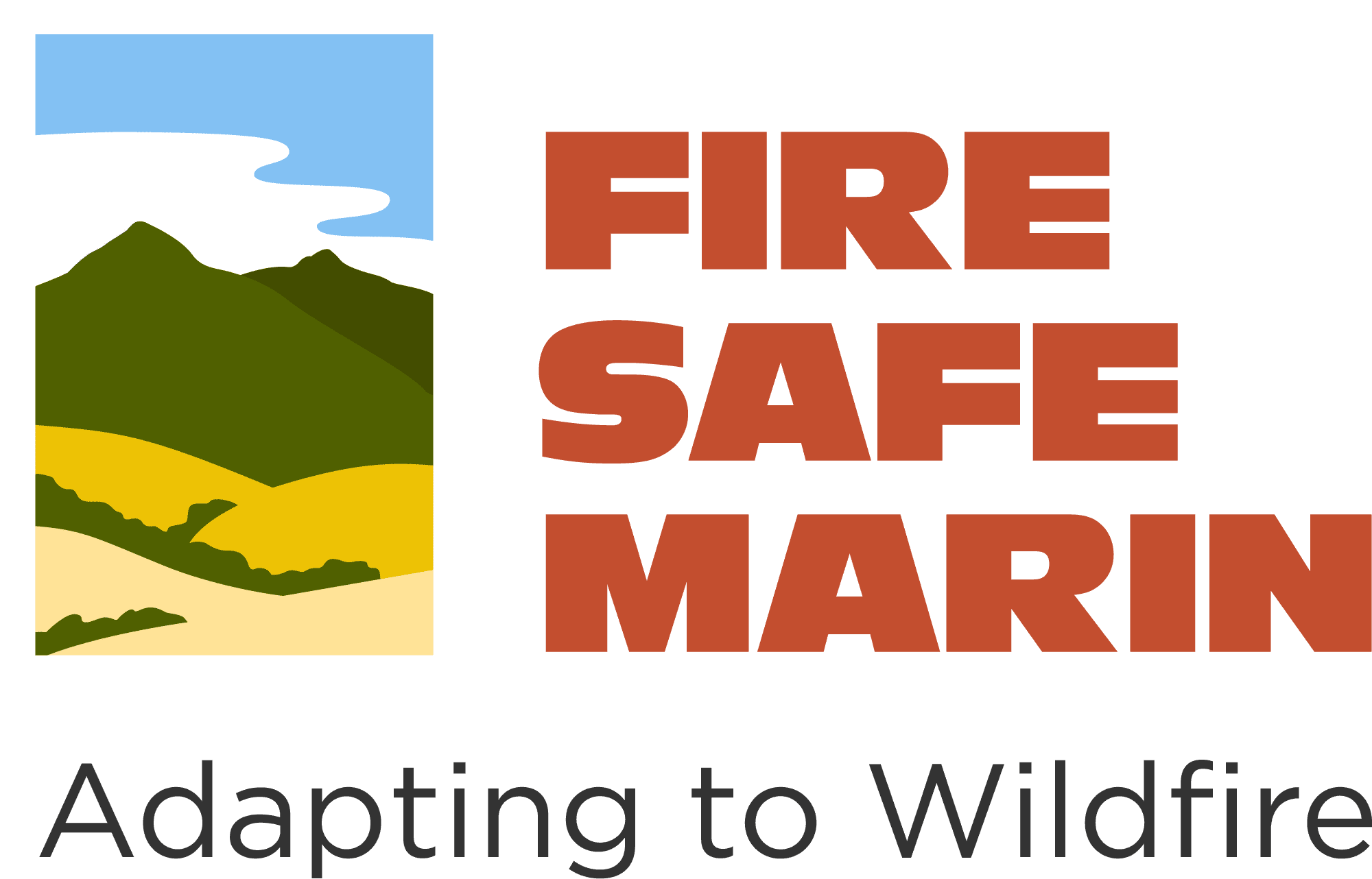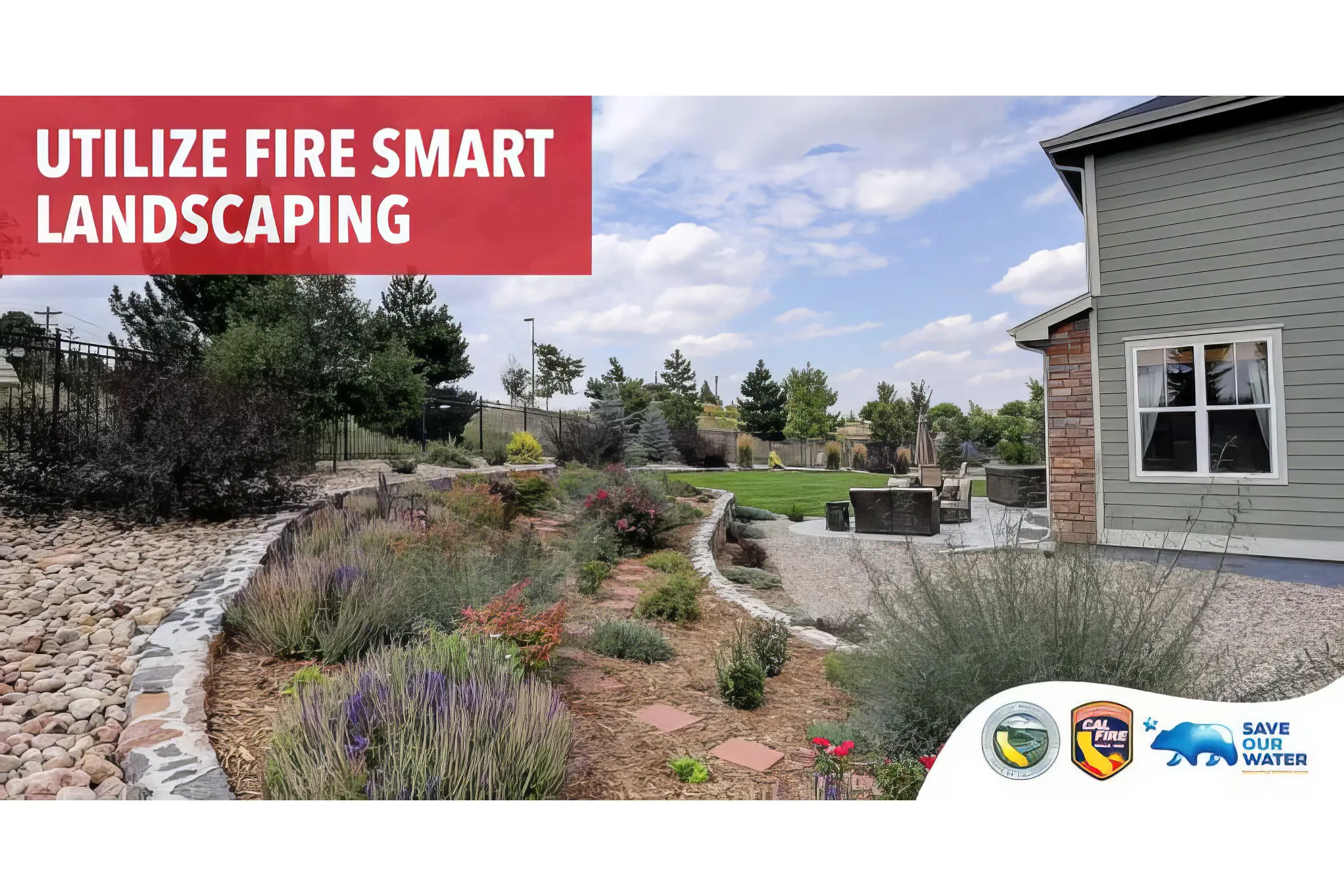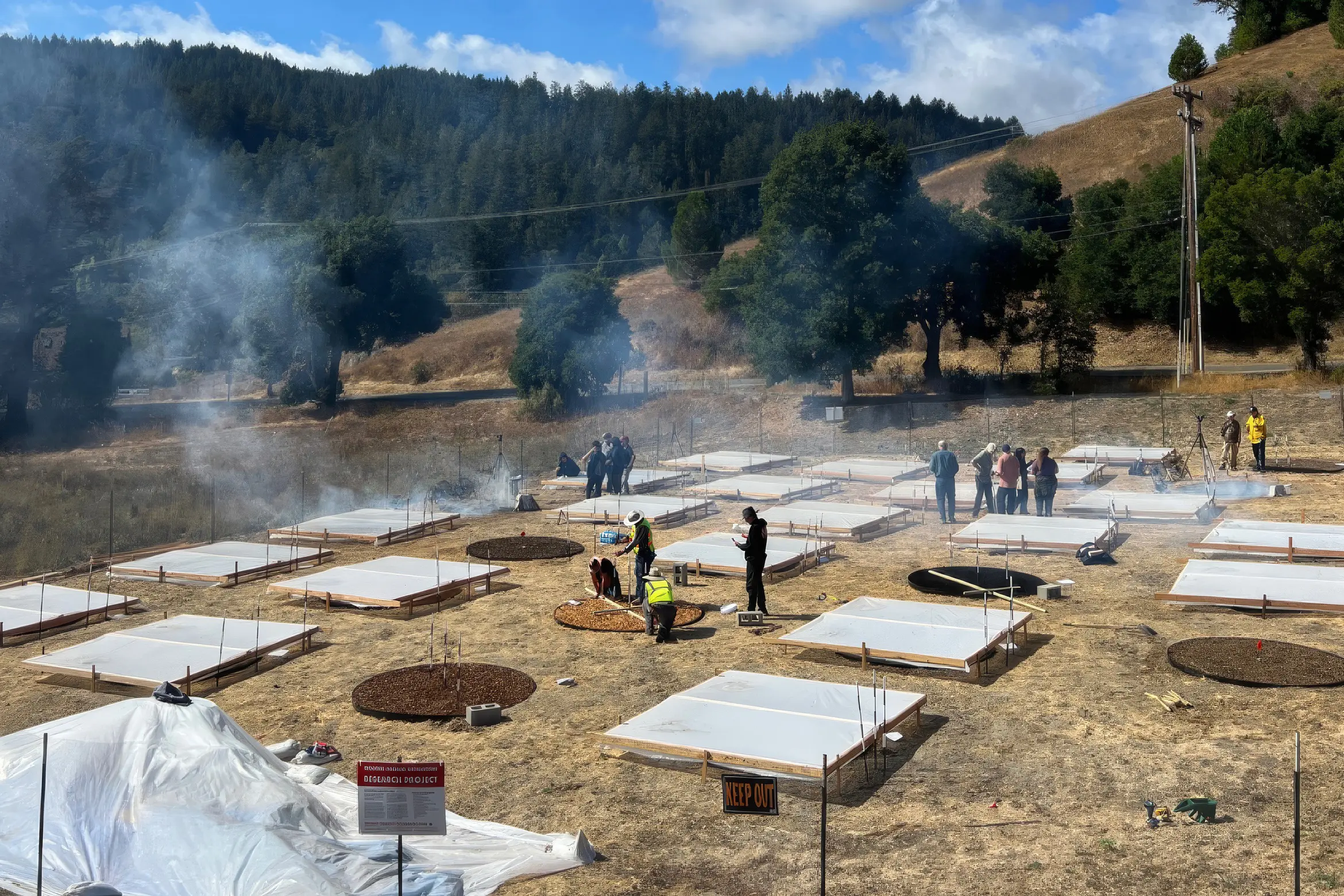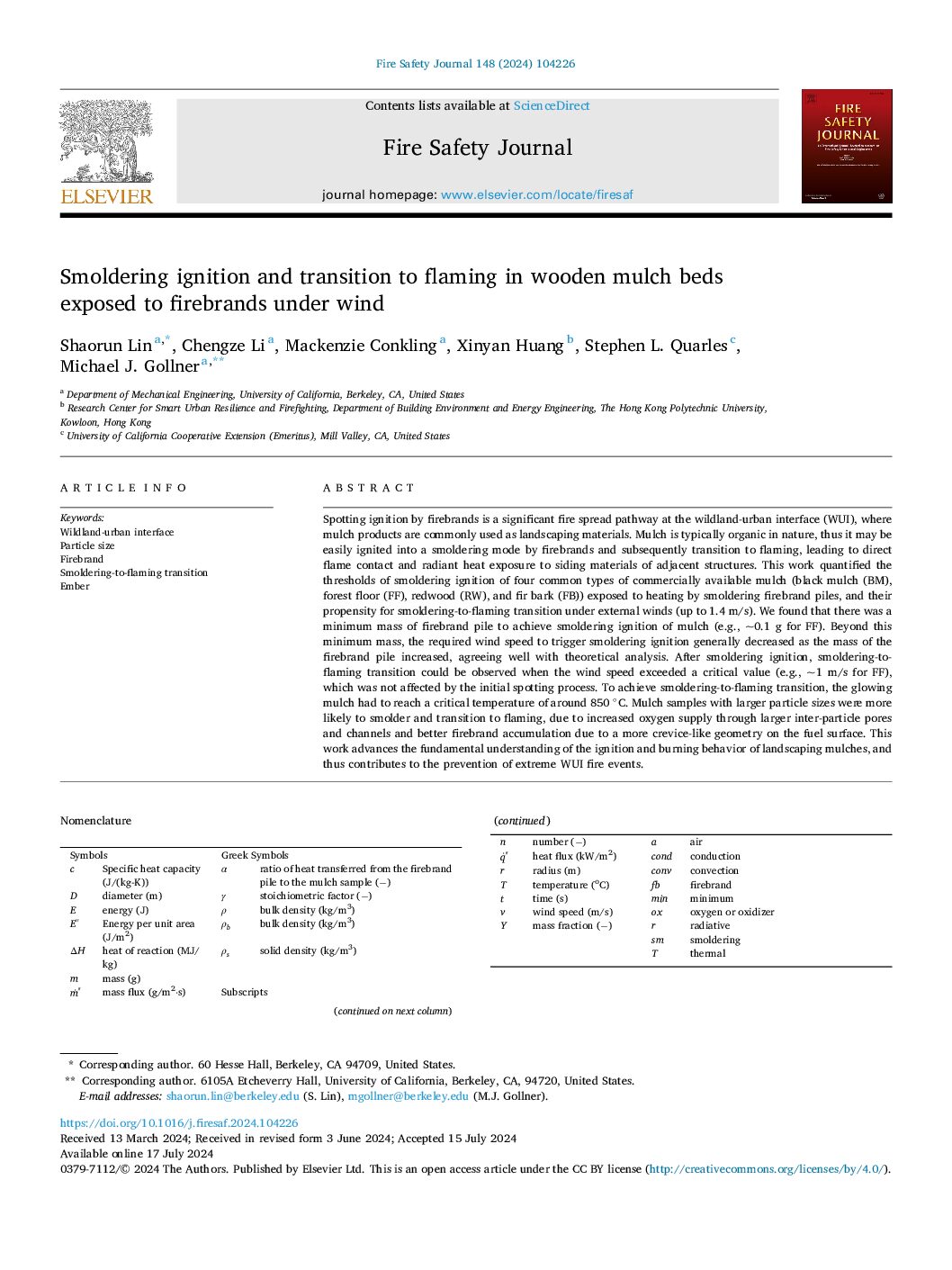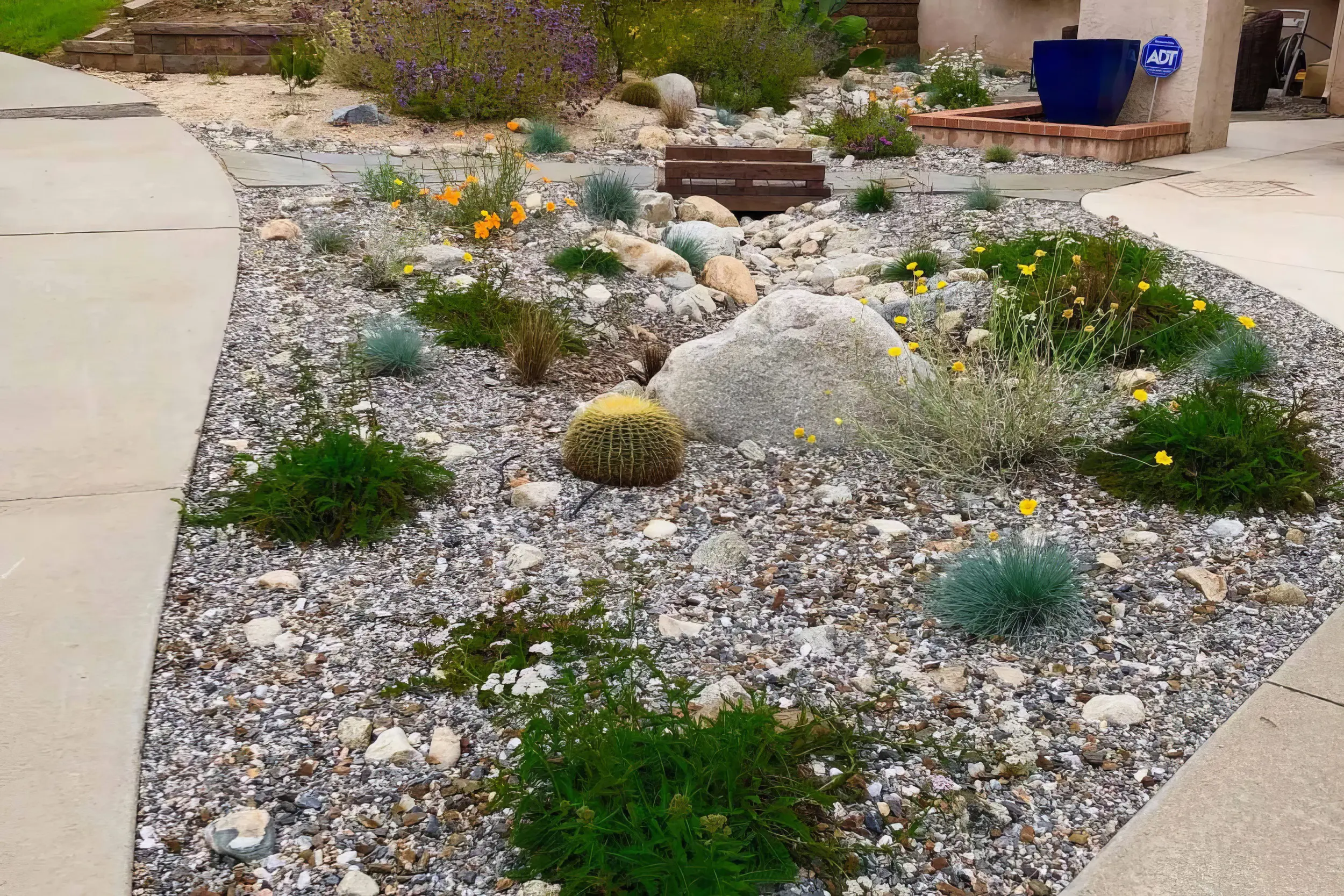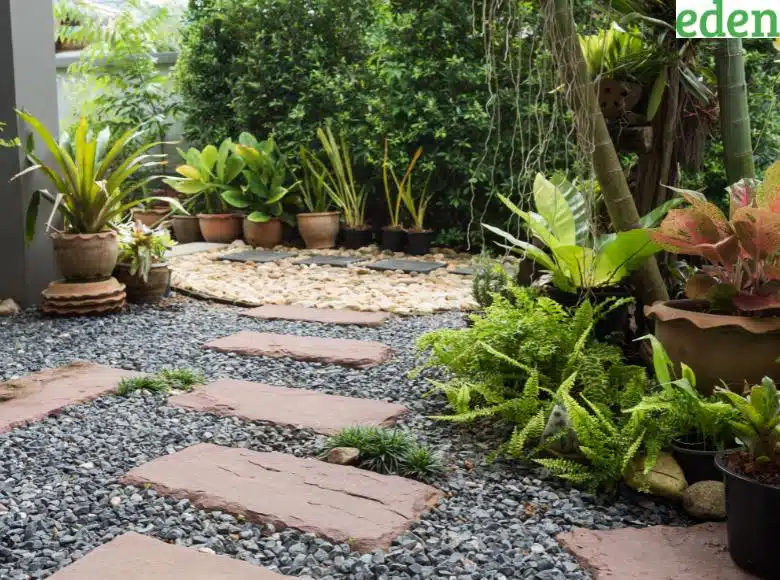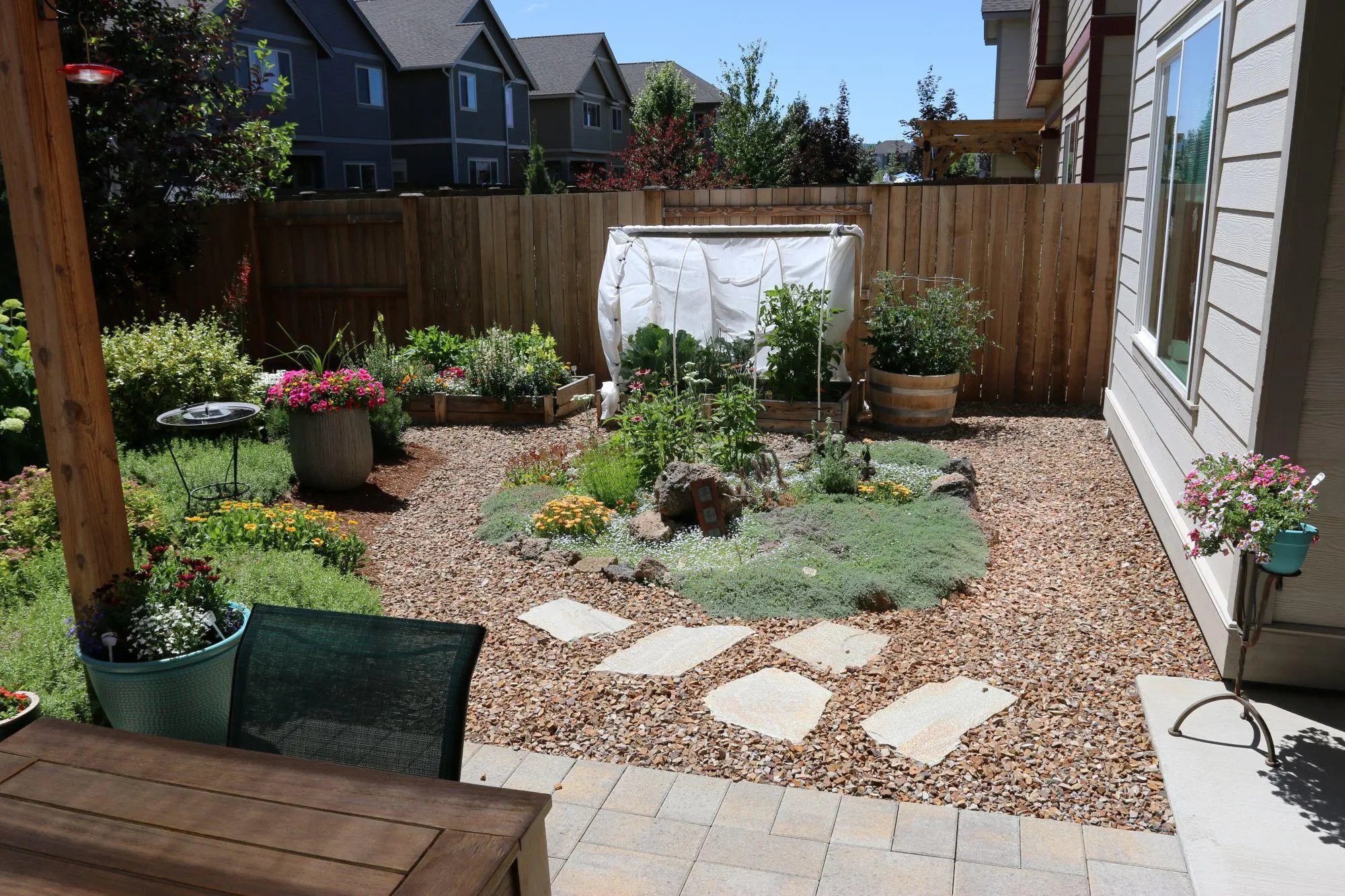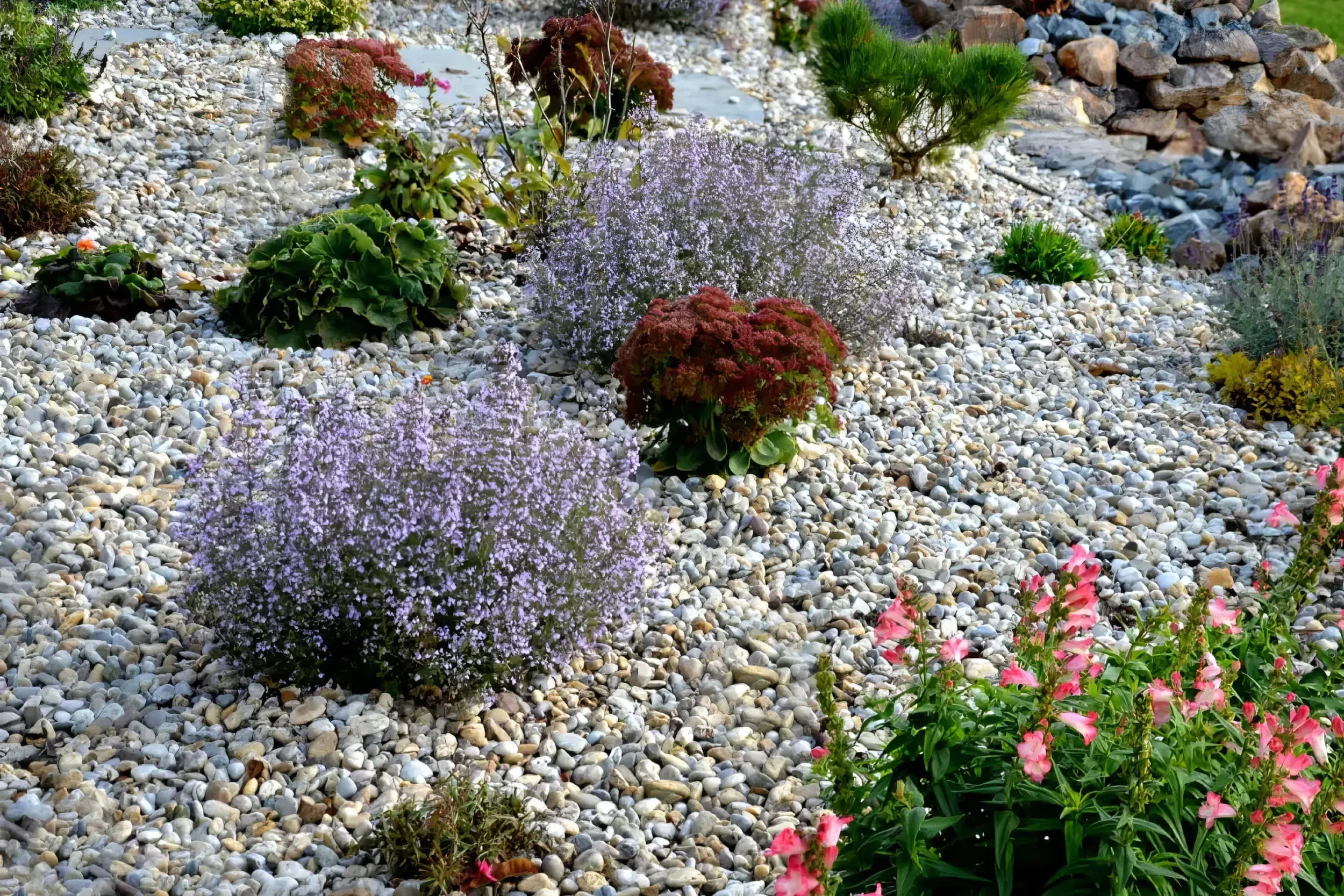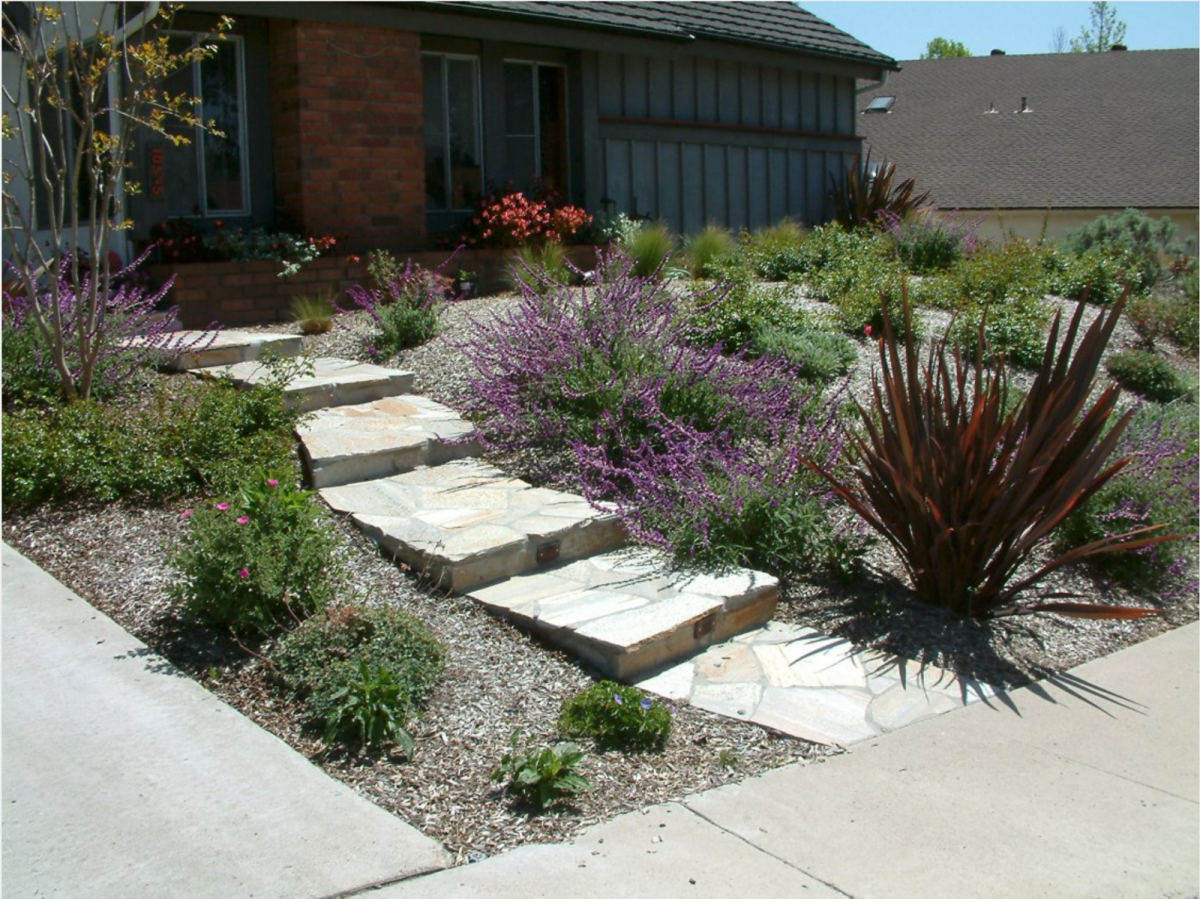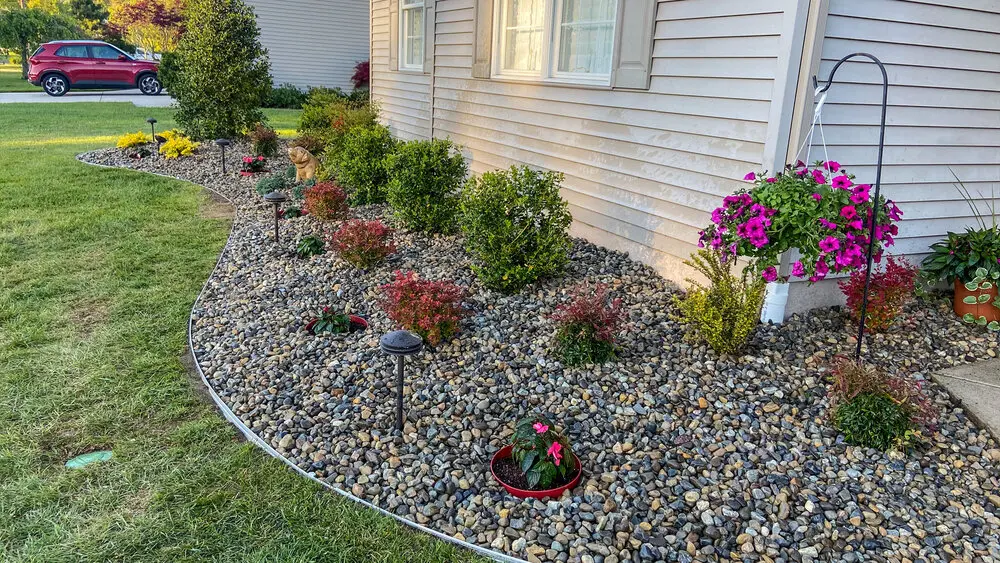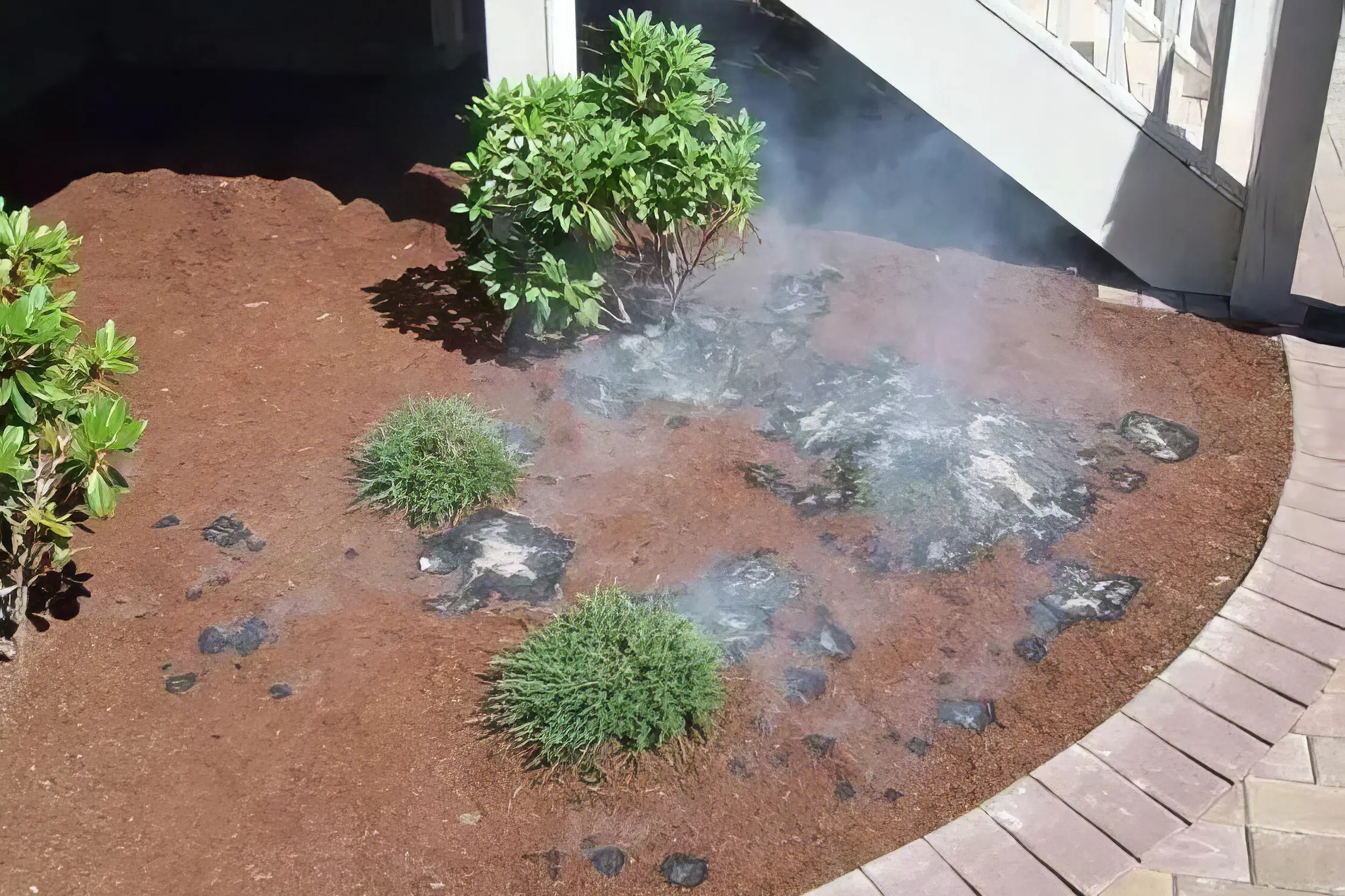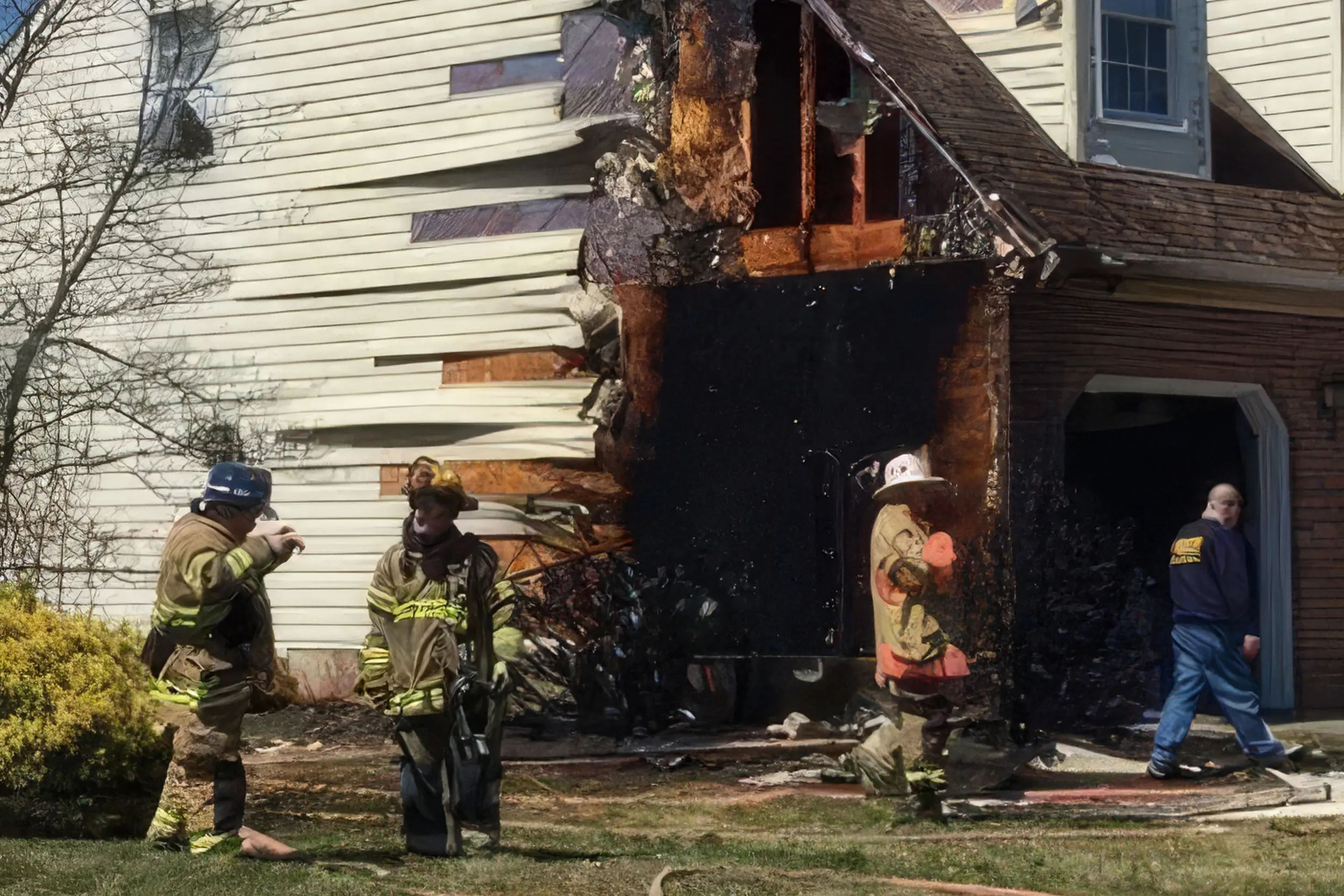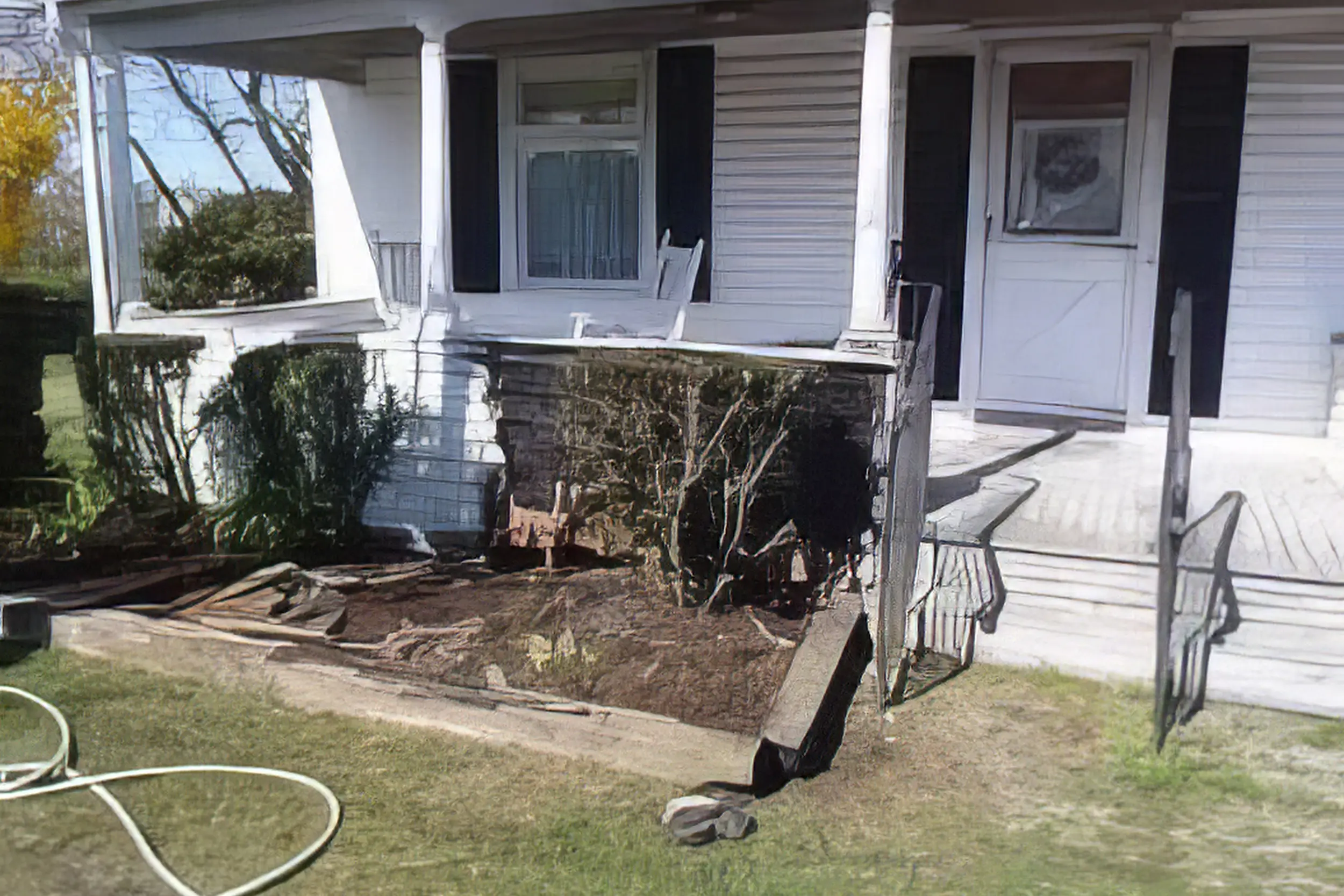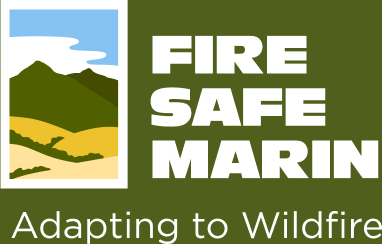IN THE EVENT OF AN EMERGENCY THIS SITE IS NOT MONITORED. FOR CURRENT INFORMATION GO TO HTTPS://EMERGENCY.MARINCOUNTY.GOV.
How to Use Fire-Resistant Mulch
Homeowners should choose the right landscaping mulches to reduce the likelihood of ignition from embers during a wildfire and improve the health of plants around their homes.
Mulch
Mulch plays an important role in Western residential landscapes. Mulches are often promoted as being environmentally friendly and a desirable landscape practice. Mulch can do the following:
- reduce the water requirements of plants
- cool soil temperatures
- reduce the occurrence of weeds
- control soil erosion and dust
- prevent soil compaction
- visually enhance the landscape
Unfortunately, despite the positive attributes, many mulches are combustible–a major drawback when used in home landscapes located in wildfire-prone areas (Quarles 2011).
2023 Mulch Flammability Study
The mulch study took place at the Marin County Fire Department Admin Headquarters at the San Geronimo Golf Course from October 10-12th. Ten different mulch products were separated into piles and allowed to dry and weather to simulate the condition of mulch found in Marin yards and landscapes. Each mulch was placed into three circular piles approximately 8 feet in diameter and 3 inches deep. After the material had weathered for four months, the material was ignited. Instruments were placed to measure flame length, rate of flame spread, and radiant heat.
Results of 2023 Mulch Flammability Study
In this work, well-controlled experiments were conducted to investigate the limiting conditions of smoldering ignition of mulch by glowing firebrand piles and the subsequent smoldering-to-flaming transition under external winds. We found that the peak heat flux, heating duration and heating area all increased with the mass of the firebrand pile within the test range. However, as the wind speed increased, the peak heat flux first increased due to an increased oxygen supply, but then decreased due to competition with increased convective cooling.
For a larger firebrand pile, no external wind was required to trigger smoldering ignition of mulch. However, as the mass of the firebrand pile decreased, a larger wind speed was required to intensify the reaction of the brands and thus heat the mulch samples sufficiently to achieve smoldering ignition. Eventually, there was a minimum mass of firebrand pile to trigger ignition. A simplified heat transfer analysis was proposed which explained the phenomenological relationship between wind speed and the mass of firebrand piles by including the heating area and two-dimensional cooling effects.
Smoldering-to-flaming transition was observed when the wind speed was larger than a critical value which was insensitive to the mass of the firebrand pile but varied with the mulch fuel types. A critical smoldering-to-flaming temperature of around 850 ◦C was found. Finally, the mulch sample with a larger particle size can be more easily ignited by a firebrand pile in a smoldering state and subsequently transitioned to flaming. This work provided necessary information about the ignition and smoldering-to-flaming transition for mulch, which was an important step towards understanding realistic fire scenarios at the wildland-urban interface. Future experimental and numerical work is still needed to better understand the coupling between gas- and solid-phase processes leading to the smoldering-to-flaming transition.
Recommendations
- Maintaining noncombustible, ignition-resistant areas immediately adjacent to structures is particularly important. Embers often accumulate adjacent to structures, providing an ignition source for combustible materials.
- Inorganic mulches such as decomposed granite, gravel, or rocks offer superior fire-proofing as landscape mulches and should be used when mulch is needed within five feet of buildings or any combustible structural materials such as siding or decking. Any fallen or windblown leaf litter or debris that has collected on the rocks must be regularly removed to prevent small debris fires from igniting structures. Live plants, even when irrigated, are not recommended within five feet of buildings.
- For areas between five and 30 feet of structures, composted wood chips may be used in small batches. Since these materials are combustible and will transmit fire across an area, do not use them in a widespread or continuous manner. Within this perimeter, alternate areas between bark and non-combustible materials such as concrete, gravel, rock, and lawn.
- In testing, composted wood chips were the best choice of the materials tested for residential landscape use, but may be difficult to source locally. They are organic and will still burn, but tend to burn at the lowest speed and lowest flame length. If this material is ignited, it could still ignite siding, plant debris, and other combustible materials. The smoldering of this product could also go undetected by firefighters during a wildfire.
- Pine needles and shredded redwood or cedar bark can have their place in your landscaping design, just further from your home. Fire Safe Marin recommends that these materials not be used within 30 feet of any structure or combustible accessories such as fences or outdoor furniture. These materials could be used selectively for landscaping at least 30 feet from your home (and neighbors’ homes), and ten feet from roads or driveways or any accessory structures (e.g., fences, outbuildings, play structures, etc.).
- Spray-on fire retardants are typically only effective at suppressing fire spread for five to ten minutes. Water-soluble fire retardants are also at risk of losing their effectiveness due to precipitation or irrigation of mulch material.
- Irrigating wood and bark mulches should not be relied upon to lessen fire hazard. Irrigation does reduce the ignitability of mulches, but water supply and pressure may be limited or unavailable during a wildfire. Furthermore, the dry, hot, and windy weather seen during wildfires will dry out the mulch bed well in advance of the flaming front.
2008 Mulch Study Findings
Another evaluation of mulch combustibility was performed in 2008 by the University of California Cooperative Extension and the University of Nevada Cooperative Extension. This study resulted in recommendations for mulch use in wildfire hazard areas.
The study defines mulch as any material that is used to cover the soil surface for a variety of purposes. Mulches can be classified as organic or inorganic. Organic mulches usually come from plant materials and include pine needles, pine bark nuggets, shredded western cedar, and even ground or shredded rubber. Inorganic mulches consist of rock, gravel, and brick chips. These inorganic mulches do not burn and are safe to use in any setting.
Eight mulch treatments were evaluated for three characteristics: flame height, rate of fire spread, and temperature. On the test day, the National Fire Danger Rating System value was Extreme. All eight mulches were found to be combustible but varied considerably in the three areas measured.
- Composted wood chips showed the slowest spread rate and the shortest average flame length, usually smoldering.
- Shredded rubber, pine needles, and shredded western red cedar showed the greatest potential for all three characteristics.
- Shredded rubber burned at the hottest average temperature (in excess of 630 degrees F at a height of four inches) and produced the greatest flame length at over three feet.
- Shredded western red cedar had the most rapid rate of spread, traveling at an average rate of 47.9 feet per minute. It also produced embers that moved beyond the plot perimeter and ignited adjacent mulch plots.
Resources
References
- Quarles, S. and E. Smith. 2011. The Combustibility of Landscape Mulches, SP-11-04, University of Nevada Cooperative Extension, Reno, NV.
- Rogstad, A., T. DeGomez, C. Hayes, J. Schalau, and J. Kelly. Revised 10/2014 Originally Published 2007. Comparing the Ignitability of Mulch Materials for a Firewise Landscape. University of Arizona, College of Agriculture and Life Sciences Bulletin, AZ1440.
- https://ucanr.edu/sites/fire/Prepare/Landscaping/Mulch/
